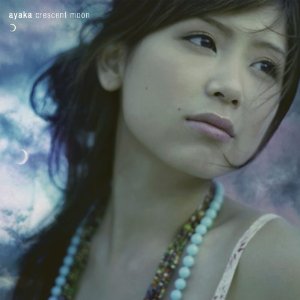
Japanese singer Ayumi Hamasaki has released seventeen studio albums, five compilation albums, twenty-six remix albums, four live albums and numerous singles and promotional singles. She debuted in 1995 under Nippon Columbia with the stage name Ayumi, releasing an extended play Nothing from Nothing, which was a collaboration with Dohzi-T and DJ Bass. Three years later, Hamasaki debuted again as a singer under Avex Trax with the single "Poker Face" (1998). Her first album A Song for ×× (1999) debuted at number one on Oricon's albums chart, and sold over 1.4 million copies.

American hard rock band Bon Jovi has released fourteen studio albums, three live albums, five compilation albums, five EP, sixty-six singles, fourteen video albums, and seventy-one music videos. With over 130 million records sold worldwide, Bon Jovi is one of the best-selling bands of all time. Album sales in the Unites States during the Nielsen Soundscan era (1991–2015) stood at 21,8 million copies sold. The group's first commercial release was the single "Runaway" from its eponymous debut (1984), which had a modest success in the US. Its sophomore album 7800° Fahrenheit (1985) achieved bigger success than its predecessor being the band's first album to be certified gold by the Recording Industry Association of America (RIAA) for shipping 500,000 copies in the US.

The discography of Japanese R&B singer Misia consists of nine studio albums, three compilation albums, one extended play (EP), one live album, six remix albums, twenty-six singles, twelve promotional singles, eighteen video albums and thirty-seven music videos. In 1997, Misia signed a recording contract with BMG Japan and joined the then up-and-coming talent agency, Rhythmedia. Under the sub-label Arista Japan, Misia released her first single, "Tsutsumikomu Yō ni..." in February 1998, followed by "Hi no Ataru Basho" in May. In June, her debut album, Mother Father Brother Sister, opened at number three on the Oricon chart. The album peaked at number one three weeks later and stayed in the top five for eleven consecutive weeks. Mother Father Brother Sister was certified double million and won a Japan Record Award for Best Album, as well as a Japan Gold Disc Award for Pop Album of the Year. In 2000, Misia's second studio album, Love Is the Message, debuted at number one and was certified double million. It won a Japan Record Award for Best Album and a Japan Gold Disc Award for Pop Album of the Year. The album spawned three top ten hits: "Believe," "Wasurenai Hibi" and "Sweetness." Misia's first remix album, Misia Remix 2000 Little Tokyo, was released three months later and shot to number one. It sold over 800,000 copies and is the second best-selling remix album of all time in Japan.

"Mikazuki" is the fourth single from Ayaka, released on September 27, 2006.
The discography of Mika Nakashima includes 11 studio albums, 7 compilation albums, 45 singles and 20 video albums. These have all been released through Sony Music Entertainment Japan.
The discography of Ayaka consists of three studio albums, two compilation albums, a cover album and numerous singles, released through Warner between 2006 and 2009, and through Ayaka's independent label, A Station, from 2012 onwards.

"Dear.../Maybe" is a double A-side released by Japanese pop and R&B singer-songwriter Kana Nishino. It was released on December 2, 2009, by her record label SME Records.

"Don't Cry Anymore" is Japanese singer-songwriter miwa's debut major label single, released on March 3, 2010. It was used as the Nana Eikura starring drama Nakanai to Kimeta Hi's theme song. It was certified gold by the RIAJ for full-length cellphone downloads.

"Yura Yura/Gimme Gimme♥" is Beni's eight single under the label Nayutawave Records. The song "Yurayura" is about the "wavering feelings you have after a break and how you want to move on", the song is supposed to be the new signature song. "Gimme Gimme" is the new Kao Biore Body Deli commercial song and is about "confessing your feelings to the one you love".

To Love is Japanese R&B singer-lyricist Kana Nishino's second studio album. It was released on June 23, 2010 by SME Records. The album spawned four Oricon Top 10 singles, "Motto...", "Dear.../Maybe", "Best Friend" and "Aitakute Aitakute".

"Hello, Again " is a song by Japanese band My Little Lover. It was released as a single on August 21, 1995, and is currently the band's biggest hit single.

"'Jumping'" ジャンピン (Janpin) is a song performed by South Korean girl group Kara from their debut Japanese album, Girl's Talk (2010) and their fourth EP, Jumping (2010). It was released on November 10, 2010 as the second Japanese single.

"Go Go Summer!" is a song performed by South Korean girl group Kara. It was released as the fourth Japanese single on June 29, 2012 but was earlier released digitally on iTunes Japan on June 22, 2011. It was released in four different versions, three limited editions and one regular edition.

"Bo Peep Bo Peep" is a song by South Korean girl group T-ara. It is the first lead track from the album Absolute First Album, the other being "Like The First Time". The song won 5 weekly number one awards on KBS Music Bank and SBS Inkigayo. It was later re-recorded in Japanese for the group's debut single, which was released on September 28, 2011. They are the first Korean group to debut at the number one spot in both Oricon's weekly chart and Billboard Japan Hot 100. The single has sold a total of more than 91,343 copies to date and was certified Gold for a shipment of over 100,000 paid downloads by the RIAJ.

Super Girl is the second Japanese full-length album by South Korean girl group Kara. It was released digitally on November 16, 2011 and physically on November 23, 2011. A special Tour Edition of the album was released on April 11, 2012.
The discography of Japanese pop singer Kana Nishino consists of seven studio albums, six compilation albums, thirty-four singles and ten video albums. Nishino debuted in 2008 under Sony Music Japan, and gained national recognition with the singles "Tōkutemo" and "Kimi ni Aitaku Naru Kara" (2009). Nishino has released some of the most digitally successful songs in Japan: "Motto..." (2009), "Dear..." (2009), "Best Friend" (2010), "Aitakute Aitakute" (2010), "If" (2010) and "Kimi tte" (2010), all of which were certified million by the RIAJ.

South Korean pop group TVXQ, known as Tohoshinki in Japanese releases, have released 74 singles, 3 featured appearances, and 27 soundtrack appearances. The group signed with S.M. Entertainment in 2003 and released their debut single "Hug" in January 2004, peaking at number four on the Monthly Albums Chart of the Music Industry Association of Korea (MIAK). Their following single "The Way U Are", released in June 2004, entered the MIAK Monthly Albums Chart at number one.














